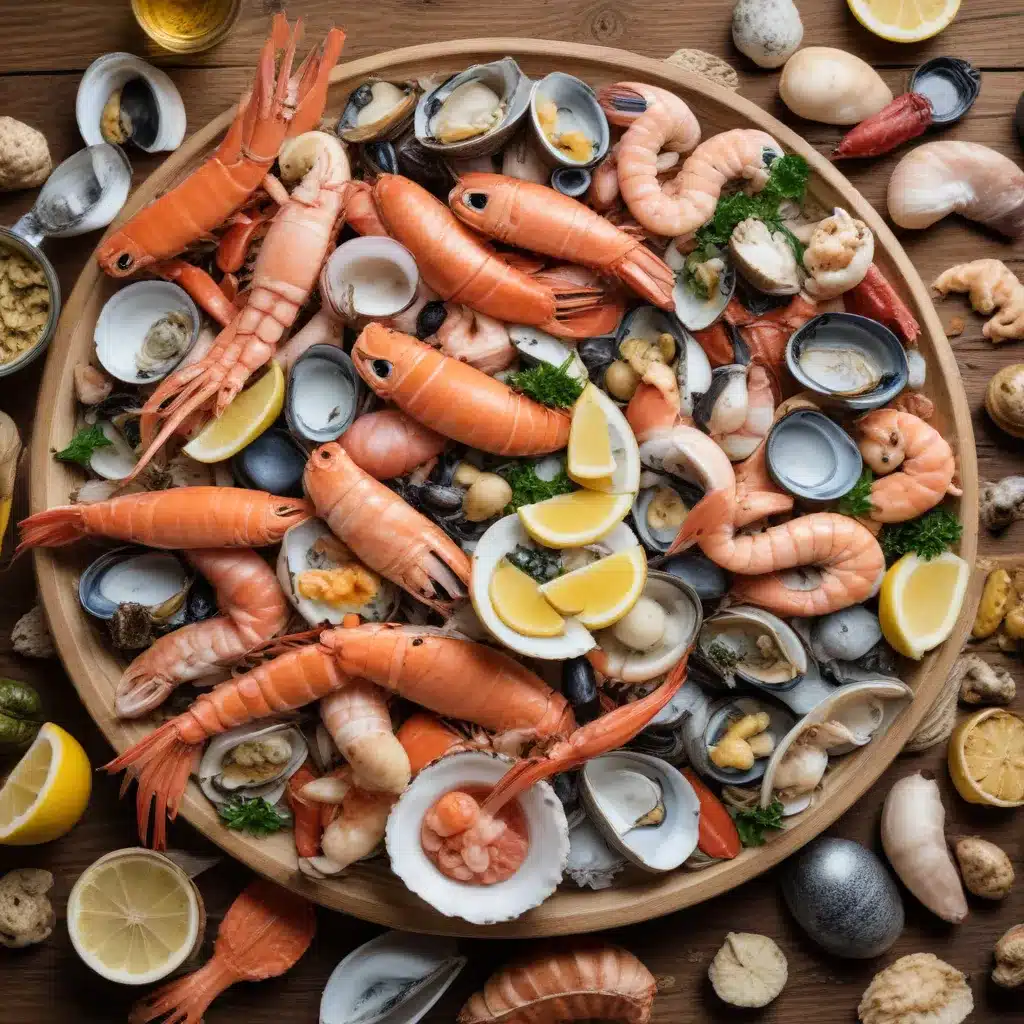
Seafood Trivia Treasure Trove: Fascinating Facts to Impress
Aquatic Delicacies
Cod, a beloved white-fleshed fish, has long been a staple in seafood cuisine around the world. Revered for its delicate, flaky texture and mild, sweet flavor, cod is a versatile ingredient that lends itself well to a variety of cooking methods, from classic baking and pan-frying to more adventurous techniques like sous vide and en papillote. Beyond its culinary appeal, cod is also a nutritional powerhouse, rich in protein, vitamins, and omega-3 fatty acids.
But did you know that cod is just the tip of the iceberg when it comes to the diverse array of seafood available to modern culinary enthusiasts? From the vibrant orange-red lobster to the delicate, translucent squid, the world’s oceans, rivers, and lakes teem with a plethora of exotic and fascinating aquatic creatures.
One such delicacy is the geoduck, a massive saltwater clam native to the Pacific Northwest. With its long, siphon-like neck and hefty size, the geoduck is a true sight to behold, often weighing in at several pounds. Despite its intimidating appearance, the geoduck is prized for its sweet, crunchy flesh, which can be enjoyed raw in sashimi or lightly steamed and chilled.
Another marine marvel is the sea cucumber, a peculiar, slug-like creature found in the depths of the world’s oceans. While they may not be the most visually appealing seafood, sea cucumbers are highly prized in Asian cuisines for their unique, gelatinous texture and purported health benefits. In traditional Chinese medicine, sea cucumbers are believed to possess anti-inflammatory and immune-boosting properties.
Fascinating Seafood Trivia
Beyond the realm of culinary delights, the seafood world is also home to a rich tapestry of legendary creatures and timeless traditions. Take, for instance, the mythical kraken, a massive, tentacled sea monster that has captivated the imaginations of sailors and storytellers for centuries. While the existence of the kraken remains unproven, sightings of giant squid – a creature that may have inspired the legend – have been documented, lending an air of mystery and wonder to the depths of the ocean.
Seafood superstitions and rituals are also deeply ingrained in many cultures around the globe. In some coastal communities, it is considered bad luck to whistle on a fishing boat, as the sound is believed to summon stormy weather. Similarly, the practice of blessing the catch – a ceremony in which fishermen invoke divine protection for their endeavors – is a time-honored tradition in many fishing villages.
But the seafood world is not only steeped in legend and lore; it is also the stage for some truly remarkable culinary traditions. In Japan, the art of omakase – where diners entrust their meal to the whims of the chef – has elevated sushi-making to a revered, almost spiritual, experience. And in Peru, the vibrant and flavorful ceviche – raw fish “cooked” in a zesty citrus marinade – has become a beloved national dish, showcasing the country’s rich maritime heritage.
Seafood Consumption Trends
The global appetite for seafood continues to grow, with an ever-increasing demand for both familiar and exotic varieties. According to the Food and Agriculture Organization of the United Nations, global seafood consumption has more than doubled since the 1960s, with Asia leading the charge as the world’s largest consumer of seafood.
But as our seafood consumption rises, so too does our collective responsibility to ensure the sustainability of marine ecosystems. Many consumers are now seeking out responsibly sourced and environmentally friendly seafood options, driving a shift towards more ethical and eco-conscious fishing and aquaculture practices.
Innovative technologies and market trends are also shaping the future of seafood consumption. The rise of plant-based seafood alternatives, for instance, offers a meatless solution for those seeking to reduce their environmental footprint or accommodate dietary restrictions. Meanwhile, the growing popularity of home meal kits and subscription services has made it easier than ever for home cooks to explore a wider range of seafood varieties and preparation methods.
Seafood Preparation Methods
The art of seafood preparation is as diverse as the aquatic creatures themselves. From the classic baked cod with lemon and herbs to the more adventurous ceviche, seafood dishes offer a world of culinary possibilities.
One particularly intriguing method is brining, a technique that involves submerging the seafood in a saltwater solution before cooking. This simple step can help to retain moisture and enhance the natural flavors of the fish or shellfish, resulting in a more tender and juicy final product.
For those seeking gluten-free options, seafood shines as a versatile and adaptable ingredient. Grilled, poached, or sautéed seafood can be easily incorporated into a variety of gluten-free dishes, from salmon burgers to shrimp scampi over zucchini noodles.
And when it comes to wine pairings, seafood is a culinary chameleon, seamlessly harmonizing with a range of grape varieties and styles. A crisp, unoaked Chardonnay can complement the delicate flavors of seared scallops, while a light, fruity Pinot Noir can beautifully balance the richness of grilled tuna.
Whether you’re a seasoned seafood aficionado or a newcomer to the world of aquatic delicacies, there’s always more to discover in the ever-evolving realm of seafood. From the mythical creatures of the deep to the innovative culinary techniques that bring them to life, the seafood universe is a treasure trove of fascinating facts and delicious possibilities. So the next time you find yourself at the Fish Tales Cafe https://www.fishtalescafe.com, be sure to dive in and explore the wonders that lie beneath the surface.

